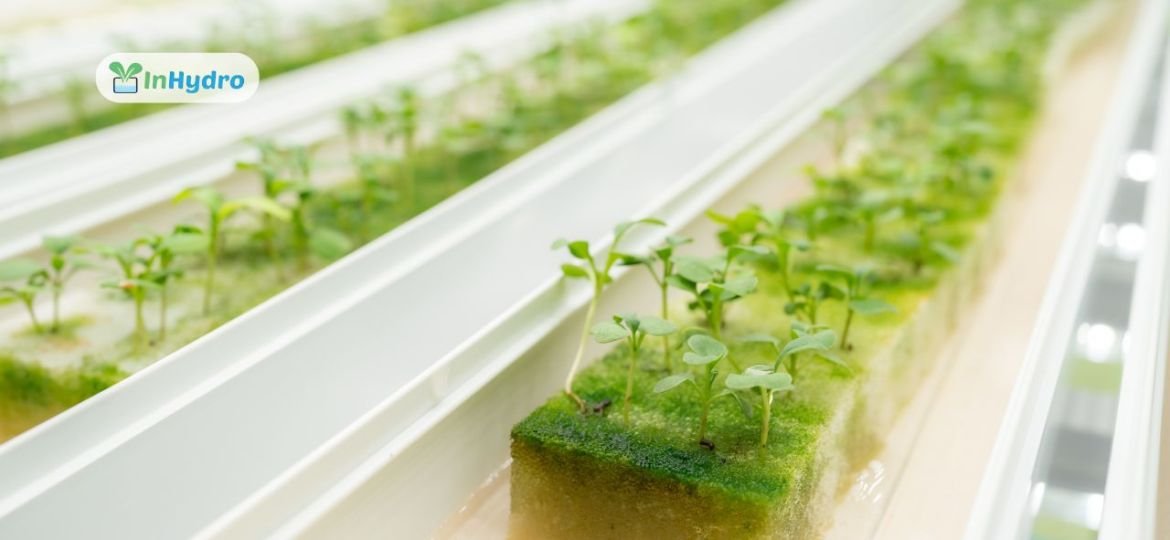
A Fresh Take on the Nutrient Film Technique (NFT) in Hydroponics
The Nutrient Film Technique (NFT) has gained widespread recognition for its simplicity and effectiveness in hydroponic farming. Designed to maximize efficiency, this method provides plants with an uninterrupted flow of nutrients, making it a cornerstone of modern soil-less farming. But how does NFT truly work, and why has it become so integral to hydroponics? Let’s explore its inner workings and practical benefits while addressing its relevance for growers—both commercial and small-scale.
What is the Nutrient Film Technique?
The Nutrient Film Technique, abbreviated as NFT, is a hydroponic system where a shallow stream of water mixed with nutrients flows continuously over plant roots. Unlike traditional farming methods, NFT eliminates the need for soil. Instead, plants are suspended in a channel system where the roots come into contact with the nutrient-rich solution.
This technique is particularly suited for leafy greens, herbs, and other crops with shallow root systems. Its clever design promotes faster growth and healthier plants while minimizing resource use.
How NFT Works: Simplified for Growers
To understand NFT’s appeal, it’s essential to break it down:
- The Structure:
NFT consists of slanted channels that allow the nutrient solution to flow from one end to the other. The channels are connected to a reservoir and a pump, creating a closed-loop system. - Nutrient Flow:
A thin film of nutrients passes along the base of the plant roots, ensuring they are hydrated, fed, and aerated simultaneously. - Gravity in Action:
Gravity aids the system by circulating unused nutrients back to the reservoir, significantly reducing wastage.
This combination of simplicity and innovation makes NFT a favorite among growers aiming for high productivity with low operational costs.
Why NFT is a Game-Changer for Soil-less Farming
The Nutrient Film Technique offers benefits that resonate with today’s environmentally conscious farming practices:
1. Efficient Nutrient Utilization
In NFT, plants absorb nutrients directly from the flowing solution. This targeted feeding ensures optimal nutrient use, leaving little room for waste.
2. Water Conservation
NFT systems recycle water, making them ideal for regions with limited water availability. Growers can achieve up to 90% water savings compared to soil-based farming.
3. Scalability for All Sizes
Whether you’re a small-scale urban farmer or managing a large commercial setup, NFT can be scaled to fit your needs. Its modular structure allows easy expansion.
4. Cleaner, Faster Growth
Without soil, plants face fewer disease risks. Additionally, the consistent nutrient supply promotes rapid and uniform growth.
Challenges You Should Know About
While the Nutrient Film Technique offers numerous benefits, it’s not without challenges:
- Dependency on Power: The pump requires constant electricity. Power interruptions can disrupt nutrient flow, causing stress to plants.
- Clogging Risks: Debris in the water or root overgrowth can obstruct channels, necessitating regular maintenance.
- Not Ideal for Large Rooted Crops: Plants with extensive root systems, such as carrots or potatoes, are unsuitable for NFT.
Understanding these challenges and proactively addressing them can make all the difference in achieving success with NFT.
Key Crops for NFT Success
Not every crop thrives in an NFT setup. The best choices include:
- Leafy Greens: Lettuce, spinach, and kale grow exceptionally well in NFT systems.
- Herbs: Basil, parsley, and mint are popular picks for home and commercial growers.
- Small Fruits: Strawberries and small peppers adapt beautifully to NFT environments.
If you’re new to hydroponics, starting with these crops can help you understand and optimize the system.
NFT vs. Other Hydroponic Systems
How does the Nutrient Film Technique stack up against other popular systems?
|
System Type |
Water Usage |
Grow Media |
Best Crops |
|
Nutrient Film Technique |
Minimal (recycled) |
None or minimal |
Leafy greens, herbs, strawberries |
|
Deep Water Culture |
Moderate |
Required |
Fast-growing crops like lettuce |
|
Dutch Bucket System |
High |
Required |
Tomatoes, peppers, cucumbers |
NFT’s standout feature lies in its ability to operate without grow media, reducing costs and maintenance requirements.
How to Start with an NFT System
Getting started with the Nutrient Film Technique is easier than you might think:
- Choose the Right Equipment: Invest in high-quality channels, reservoirs, and pumps.
- Prepare the Nutrient Solution: Use a balanced mix tailored to your crops.
- Set the Slope: Ensure channels are slanted for smooth nutrient flow.
- Plant Placement: Space plants appropriately to avoid overcrowding.
- Monitor System Health: Regularly check pH levels, nutrient strength, and water circulation.
With these steps, even beginners can successfully grow crops using NFT systems.
FAQs
Q: What makes NFT different from other systems?
A: NFT is unique because it uses a continuous nutrient flow and requires little to no grow media, making it highly efficient and cost-effective.
Q: Is NFT suitable for indoor farming?
A: Yes, NFT systems are excellent for indoor setups, provided adequate lighting and ventilation are maintained.
Q: Can I use NFT for large-scale farming?
A: Absolutely. NFT’s scalability makes it an excellent choice for commercial growers.
Why Choose InHydro for NFT Solutions?
At InHydro, we provide tailor-made NFT hydroponic system structures that cater to diverse growing needs. Whether you’re an urban farmer or managing a commercial operation, our expert team can guide you every step of the way. With InHydro, you get innovative, sustainable solutions designed to maximize your yields.
Take the next step in your hydroponic journey with InHydro—because smarter farming starts with smarter systems.

